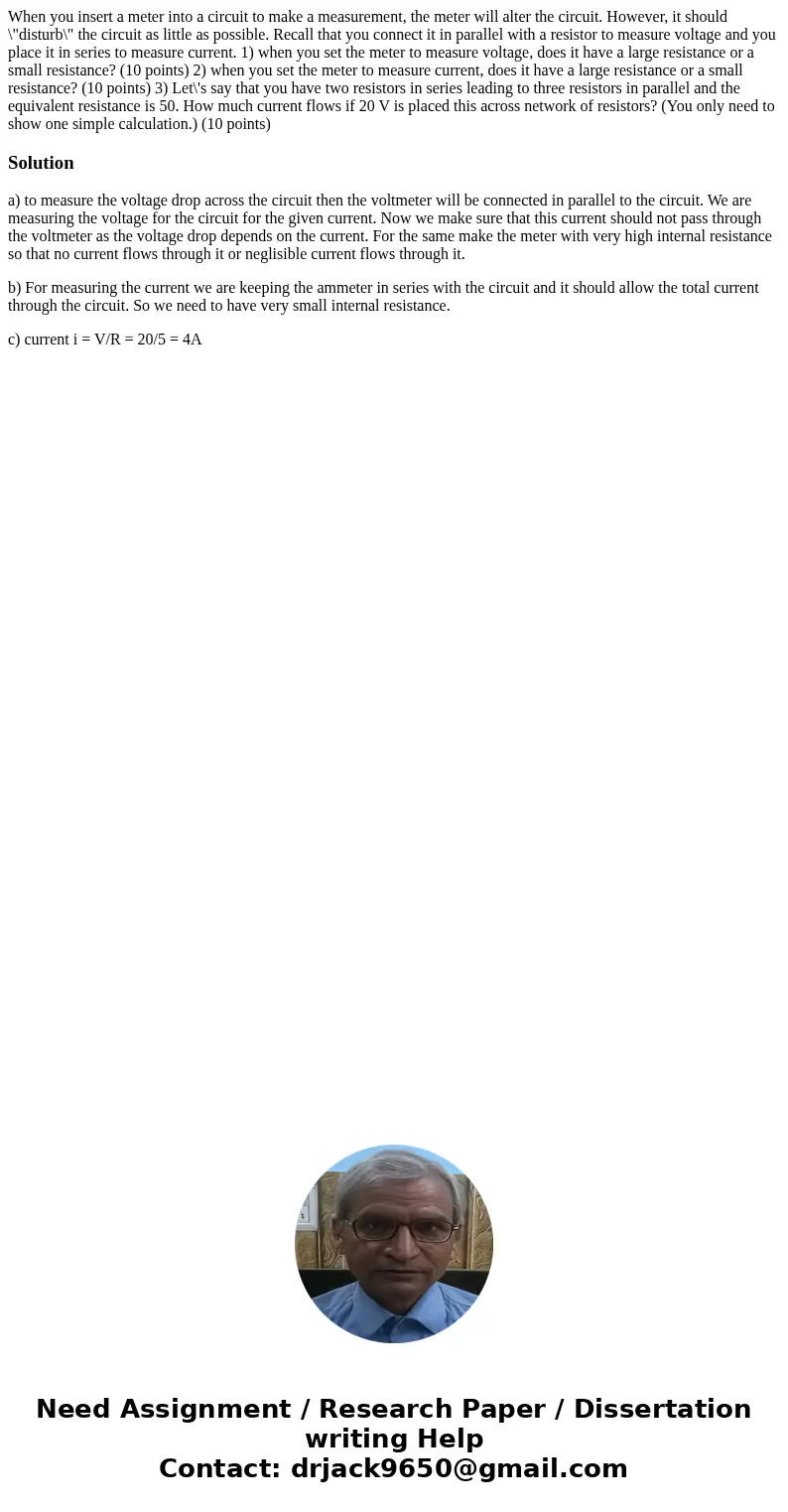When you insert a meter into a circuit to make a measurement
When you insert a meter into a circuit to make a measurement, the meter will alter the circuit. However, it should \"disturb\" the circuit as little as possible. Recall that you connect it in parallel with a resistor to measure voltage and you place it in series to measure current. 1) when you set the meter to measure voltage, does it have a large resistance or a small resistance? (10 points) 2) when you set the meter to measure current, does it have a large resistance or a small resistance? (10 points) 3) Let\'s say that you have two resistors in series leading to three resistors in parallel and the equivalent resistance is 50. How much current flows if 20 V is placed this across network of resistors? (You only need to show one simple calculation.) (10 points) 
Solution
a) to measure the voltage drop across the circuit then the voltmeter will be connected in parallel to the circuit. We are measuring the voltage for the circuit for the given current. Now we make sure that this current should not pass through the voltmeter as the voltage drop depends on the current. For the same make the meter with very high internal resistance so that no current flows through it or neglisible current flows through it.
b) For measuring the current we are keeping the ammeter in series with the circuit and it should allow the total current through the circuit. So we need to have very small internal resistance.
c) current i = V/R = 20/5 = 4A

 Homework Sourse
Homework Sourse